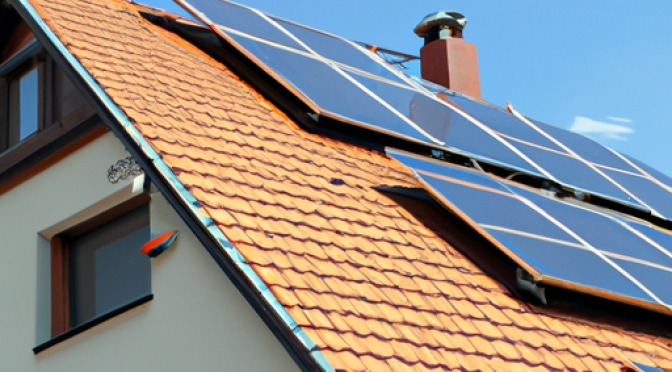What is the ideal roof design for solar panels?
Energy efficiency and sustainability are becoming increasingly important in the modern world. Solar panels offer an excellent solution to meet the energy needs of homes and businesses. However, the efficiency and lifetime of solar panels is closely linked to the roof design. In this article we will look at the ideal roof design for solar panels.
1. Roof orientation and pitch: The first important aspect of the ideal roof design is that the roof should face south. This is important because solar panels receive most of their energy from the south. The angle of the roof also affects the efficiency of the solar panels. In general, an angle of 30-40 degrees is the most optimal, as this is the angle at which the solar panels can capture the most solar energy.
2. Shading: shading has a significant impact on the efficiency of solar panels. Shading objects such as trees or buildings should be taken into account when designing the ideal roof. Solar panels should be installed in an area with minimal shading to capture as much solar energy as possible.
3. Roof material. The ideal roof material is tile or metal, as these materials are easy to handle and durable. In addition, tile or metal roofs are easier to install solar panels on and less likely to be damaged during installation.
4. Roof load capacity. The roof should be able to support the weight of the solar panels without being damaged or damaged. It is therefore important to consider the weight of the solar panels and the load capacity of the roof when designing the roof.
5. Installation options. The roof should provide sufficient space for the solar panels and allow for easy installation and maintenance. In addition, the roof should provide adequate access to the solar panels for easy access for repairs or replacement.
The ideal roof design therefore involves a number of considerations. The roof should face south, have an appropriate pitch, provide minimum shading and be of suitable material and load-bearing capacity. In addition, the roof should provide adequate installation facilities for solar panels. If these aspects are taken into account, the ideal roof design will allow the solar panels to operate efficiently and for a long lifetime.
∑: panels, design, energy, shading, efficiency, important, installation, provide, material
